The Next Alexander McQueen, a Rush of Rooster Feathers and Trippy Quills: Indigenous Designers Celebrate Heritage and Innovation at SWAIA Native Fashion Show

SANTA FE, New Mexico — “I want to be creative director of Alexander McQueen,” rising Plains Cree designer Jontay Kahm said backstage after showing his collection Sunday night at the Southwestern Association for Indian Arts Fashion Show here, with a rush of ancient-meets-avant garde rooster feathers, trippy quills and pony beads on the runway.
Kahm’s dream could be a real possibility now that Indigenous designers are rightfully taking their place in the fashion conversation, with Santa Fe as a major hub and the SWAIA runway as the premiere showcase for designers celebrating heritage and innovation.
More from WWD
Kahm, who will be the first Indigenous designer to graduate from the MFA program at Parsons next year, has already dressed Lily Gladstone. His second collection continued to highlight his ecstatic creativity and technique of building clothing on form, with draped and beaded or fully feathered separates, including his take on an Americana red T-shirt and blue jeans. There were also flocked va-va-voom diva dresses and coats paying tribute to celebrity icons like Marilyn Monroe, while others nodded to warrior regalia and religious iconography from his own culture.
The designer, who was scouted by Parsons from the Institute of American Indian Arts College in Santa Fe, and counts Iris van Herpen and Nick Cave’s sound suits as inspirations, was one of many who participated in shows and events across the city over the weekend, coinciding with the 102nd annual Indian Market.
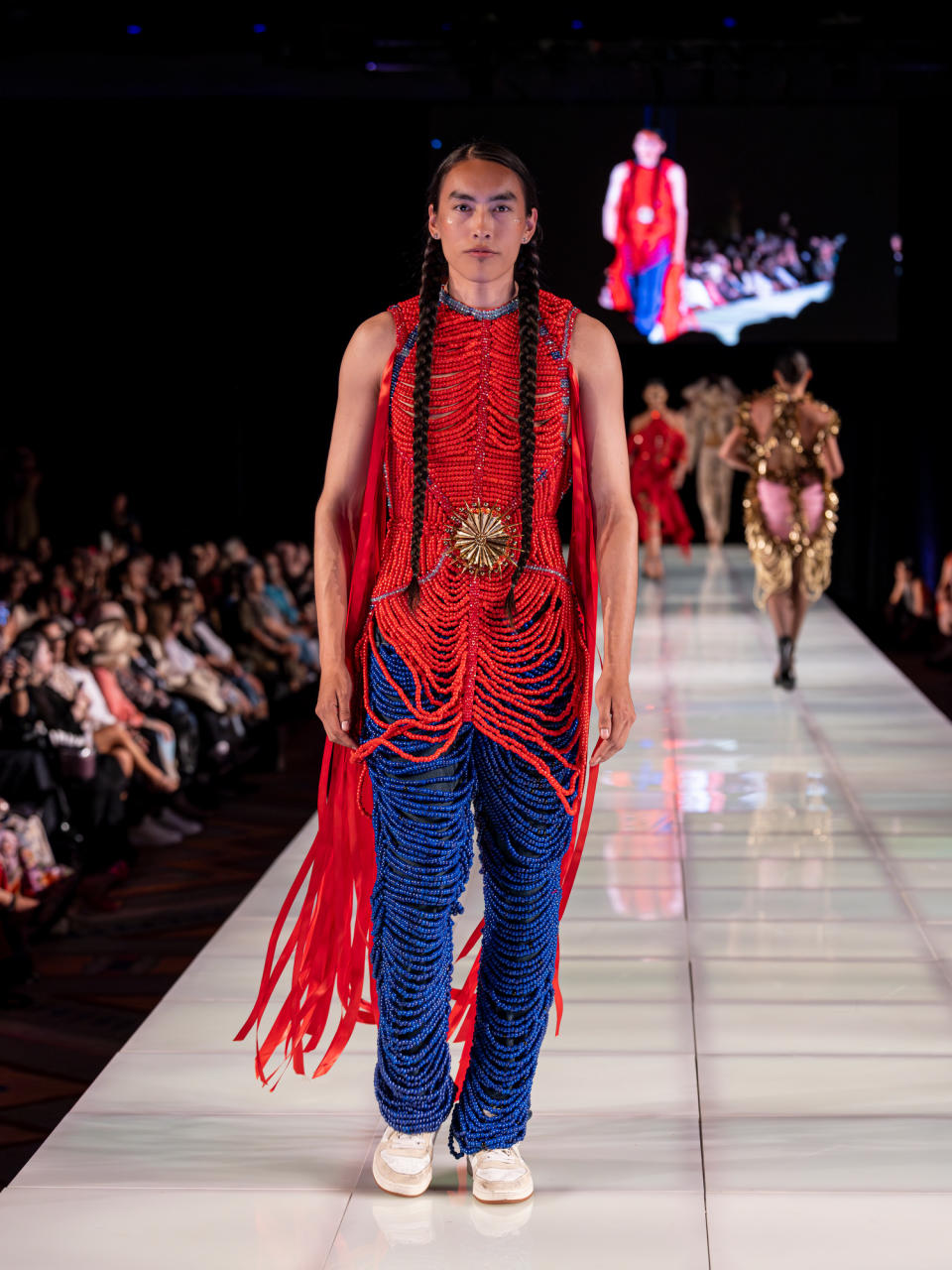
On Thursday, Diné weaver Naiomi Glasses debuted her third collection with the Ralph Lauren Artist in Residence program at a store event that was a near sellout.
At the Santa Fe Railyard on Saturday, the 4Kinship Indigenous Futures 4Ever Fashion Show was a spectacular cross-border runway exchange of clothing by the brilliant Indo-Hispanic Chicano designer and weaver Josh Tafoya, Mexico City-based star Carla Fernandez and Oaxacan textile-enhanced American workwear brand Graziano and Gutierrez alongside music from Haisla Nation hip-hop band Snotty Nose Rez Kids.
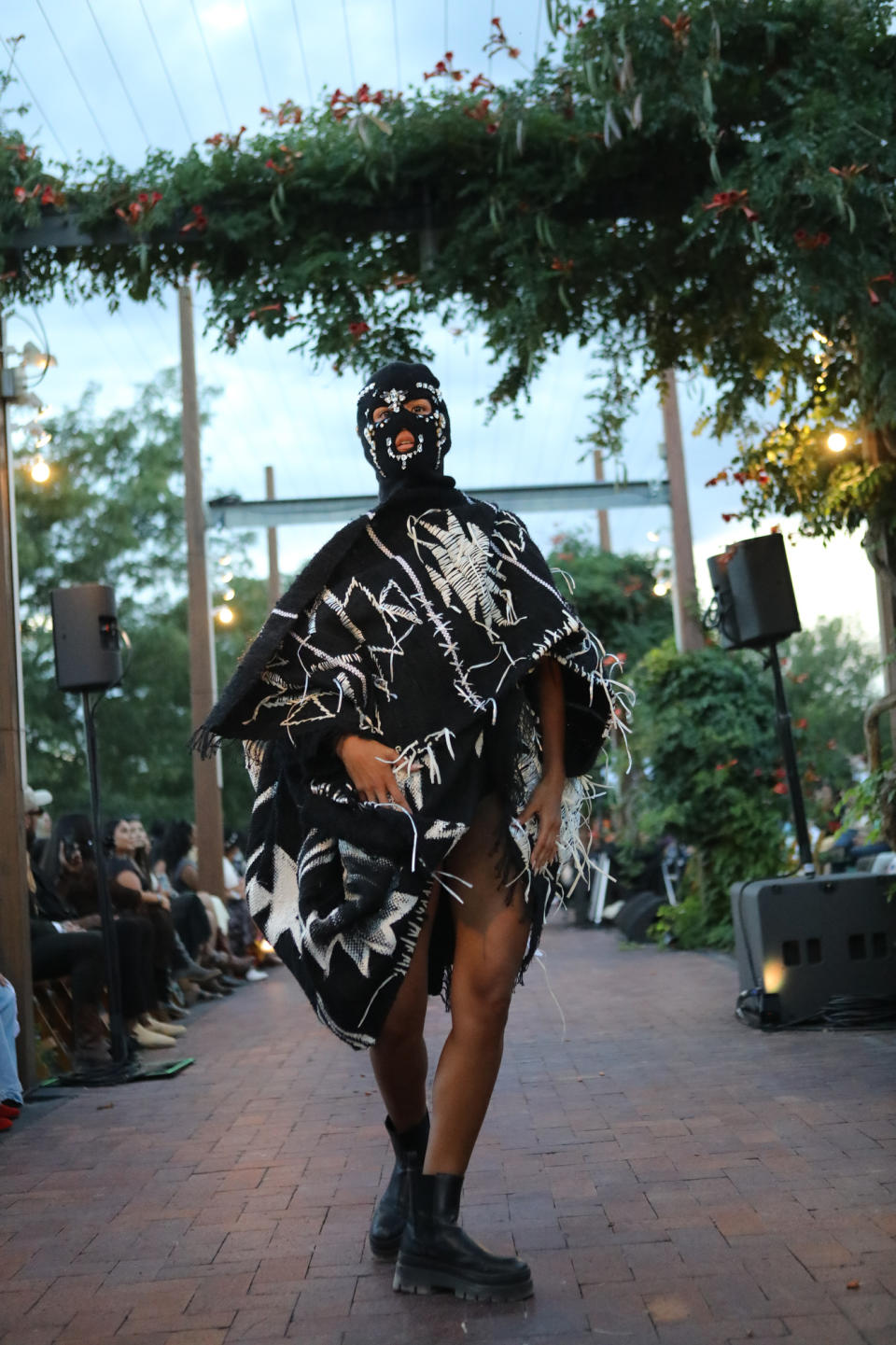
Meanwhile, at the Sovereign art showcase at La Fonda Hotel, Plains artist and designer Son of Picasso showed his punk-rock Products of My Environment streetwear using printmaking and boro techniques to explore Native pride.
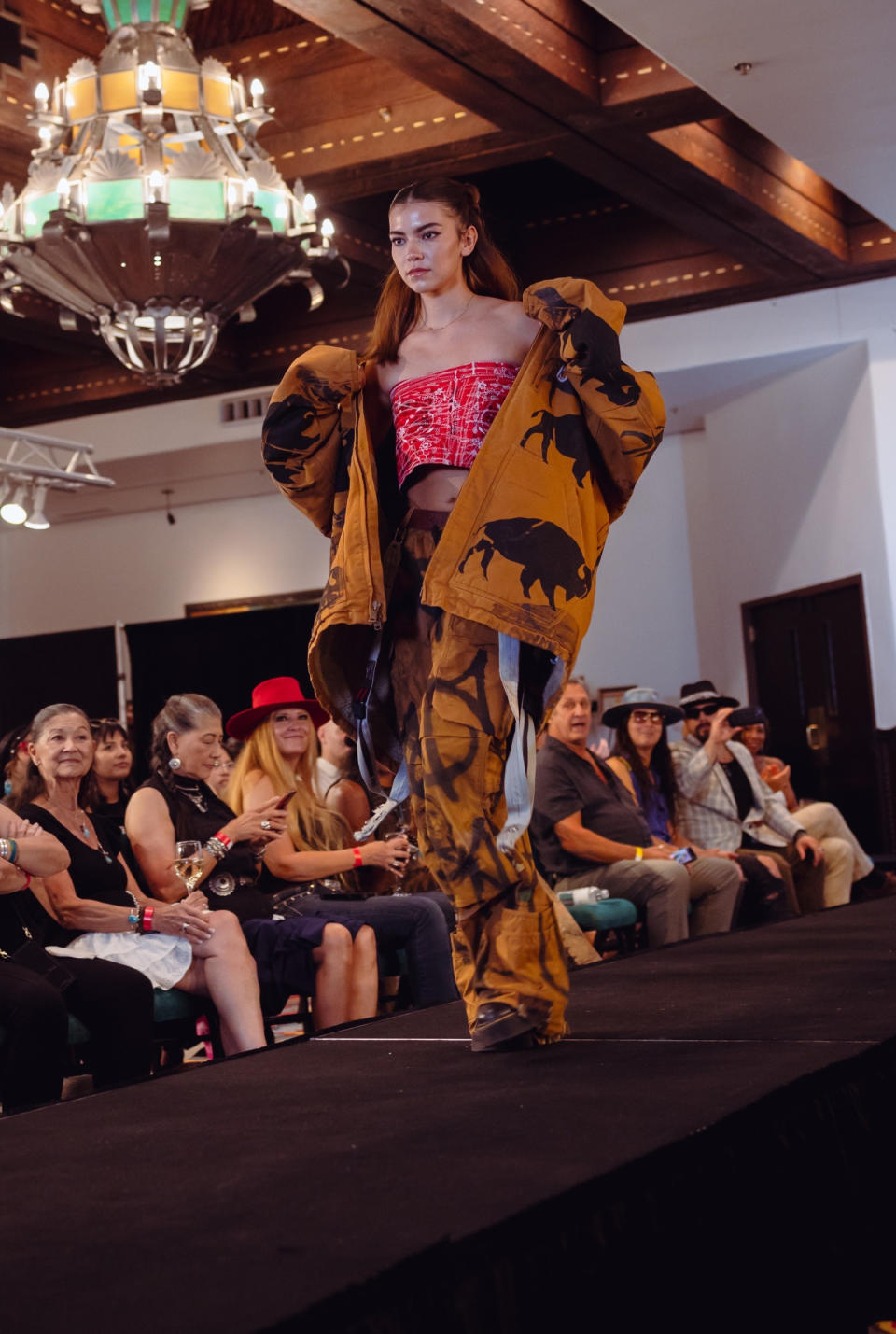
The expanding celebration of contemporary fashion is in large part due to the work of Siksika curator and art historian Amber-Dawn Bear Robe, who created the SWAIA Fashion Show in 2014, growing it into the preeminent event in North America for premiering new collections from Indigenous designers, and spinning it off into a whole Indigenous Fashion Week, which happens each May.
“My dream is that Indigenous designers are part of the larger fashion community but still hold our unique perspective, because we don’t have houses of quill workers and moose tufting,” she said of the need to preserve those crafts. “And a large part of my work is merging fashion and art.”
Indeed, many of the designers who showed on the runway Sunday excel in both, including Jamie Okuma, one of the event’s biggest draws whose clothing is known to sell out in minutes of dropping on her website. A successful beadworker and painter before launching her line, in 2023 she became the first Indigenous designer to be invited to join the Council of Fashion Designers of America.
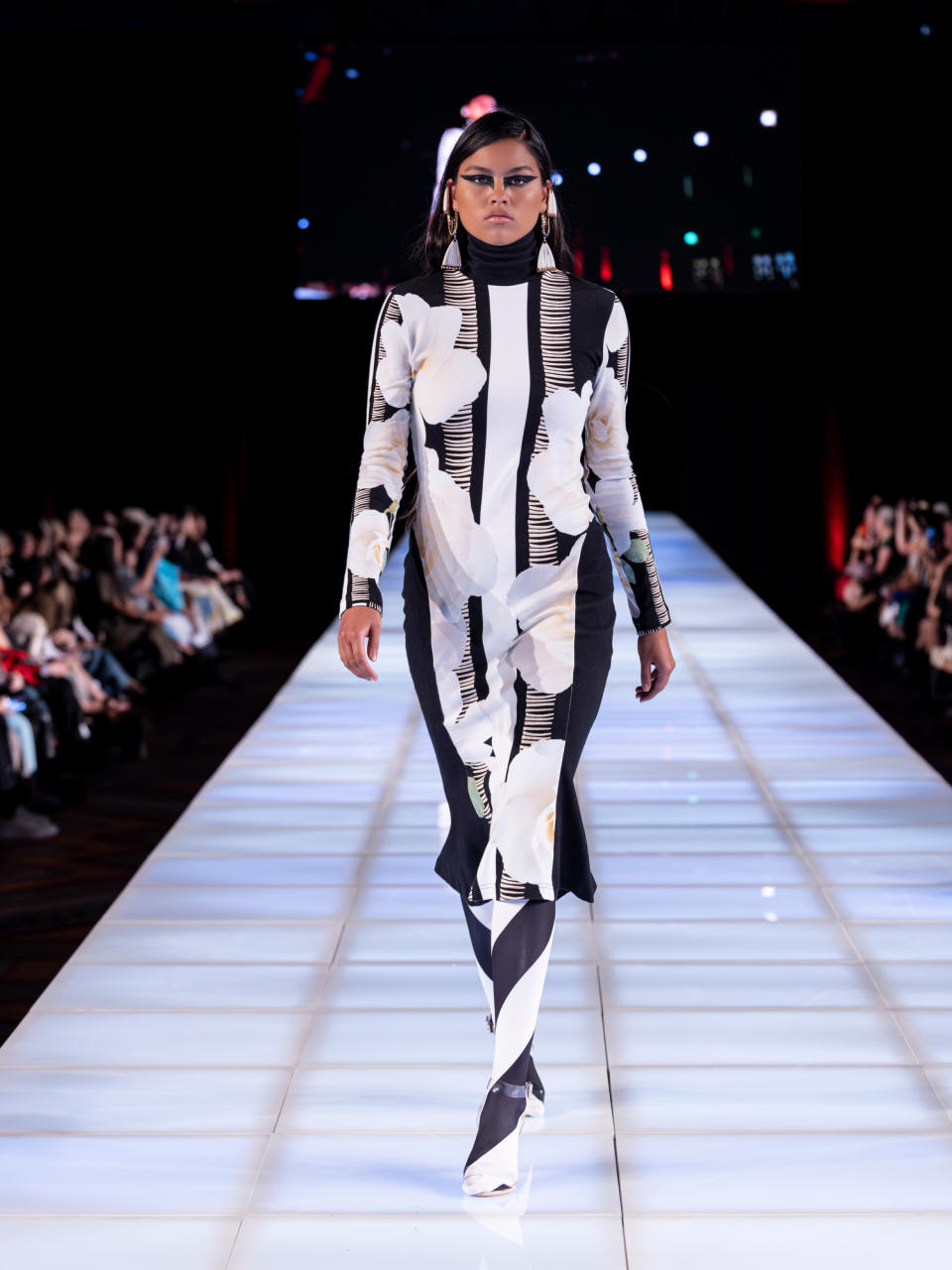
On Sunday, the Luiseno, Shoshone-Bannock, Wailaki and Okinawan designer, who is based in Southern California, showed her new collection of stretchy, loungey or night-out bamboo cotton pieces in stunning neutral linen and peony floral prints always with an edge, including graphic tube dress and tights combos that harked back to the 1960s, a very rock ‘n’ roll pants suit, and a hand-painted suede jacket that showed off her artistry.
The bamboo cotton pieces will be her first produced through a new deal with fashion tech company Resonance, and available at the end of September. “I’m able to create my own samples in L.A., shoot them off to New York, then it gets built on their platform and everything is made in the Dominican Republic and it’s all completely natural fabrics,” she said of the business development, which will enable her to scale more easily.
North Dakota-based Arikara, Hidatsa, Blackfeet and Cree ledger and beadwork artist Lauren Good Day has such a booming direct-to-consumer business with her printed men’s and women’s clothing, accessories and leather handbags, she’s looking for wholesale partners. “I wanted to make my art accessible, that’s why I started ready-to-wear,” she said of her pieces, priced under $300.
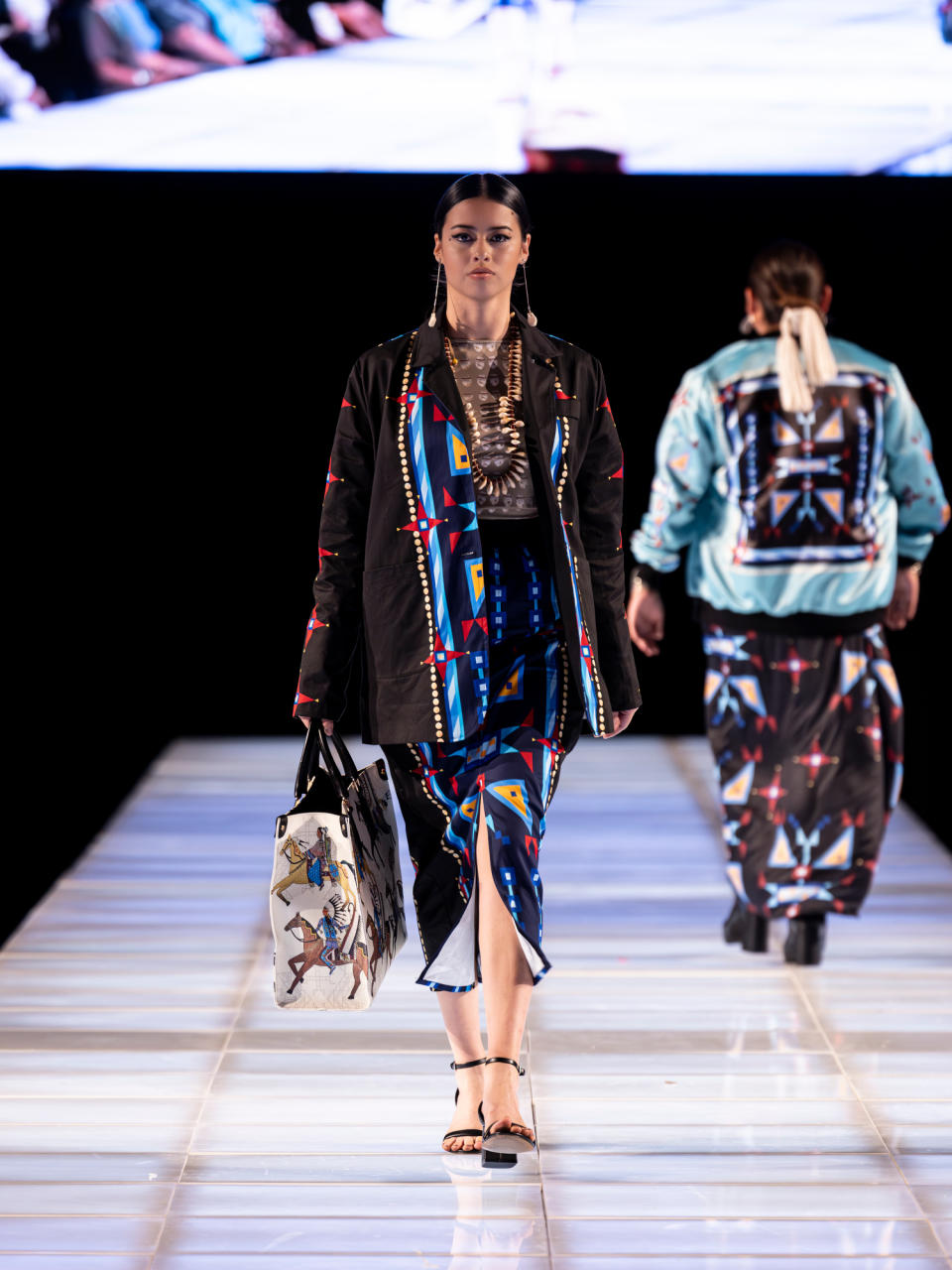
On the runway, her new work highlighted the beauty of the Plains prairie through her drawings of buffalo, butterflies, horses and morning stars, from boho dresses to T-shirt dresses, and a spectacular skirt and jacket set in a print inspired by her beading. “I want to make my designs accessible to my people,” she said, of why she started ready to wear.
Her selling booth at Indian Market was mobbed both days, and her pieces were being worn all over Santa Fe. “I have so much support from my people,” she said, noting her runway models included artist Naiomi Glasses, Cree and Salish singer Tia Wood, actor Amber Midthunder and more from Native America. “I want our people to be represented no matter where they come from.”
And no matter where they are; Good Day was one of four Indigenous designers who traveled to Paris in January for Pharrell Williams’ inclusive western-themed Louis Vuitton men’s show. She was invited by Dee Jay Twobears, the main collaborator, who has worked with Williams for years. “He brought community with him…singers, dancers, artists. Native people got to see high fashion and to represent ourselves. It’s always really important to keep community in mind and bring them with you.”
The ticketed fashion event held at the Santa Fe Convention Center featured Canada First Nations artist Kent Monkman in conversation about how he uses fashion in his practice as his alter ego Miss Chief, and in his paintings about Indigenous resilience. The runway show also included collections from Anishinaabe contemporary artist Caroline Monnet using industrial building materials, and ASEP Designs employing computer generated jewelry on clothing. A selection of looks from the fall Balmain collection was brought from Paris by a representative of the brand with a connection to Santa Fe, who was “blown away” by last year’s show.
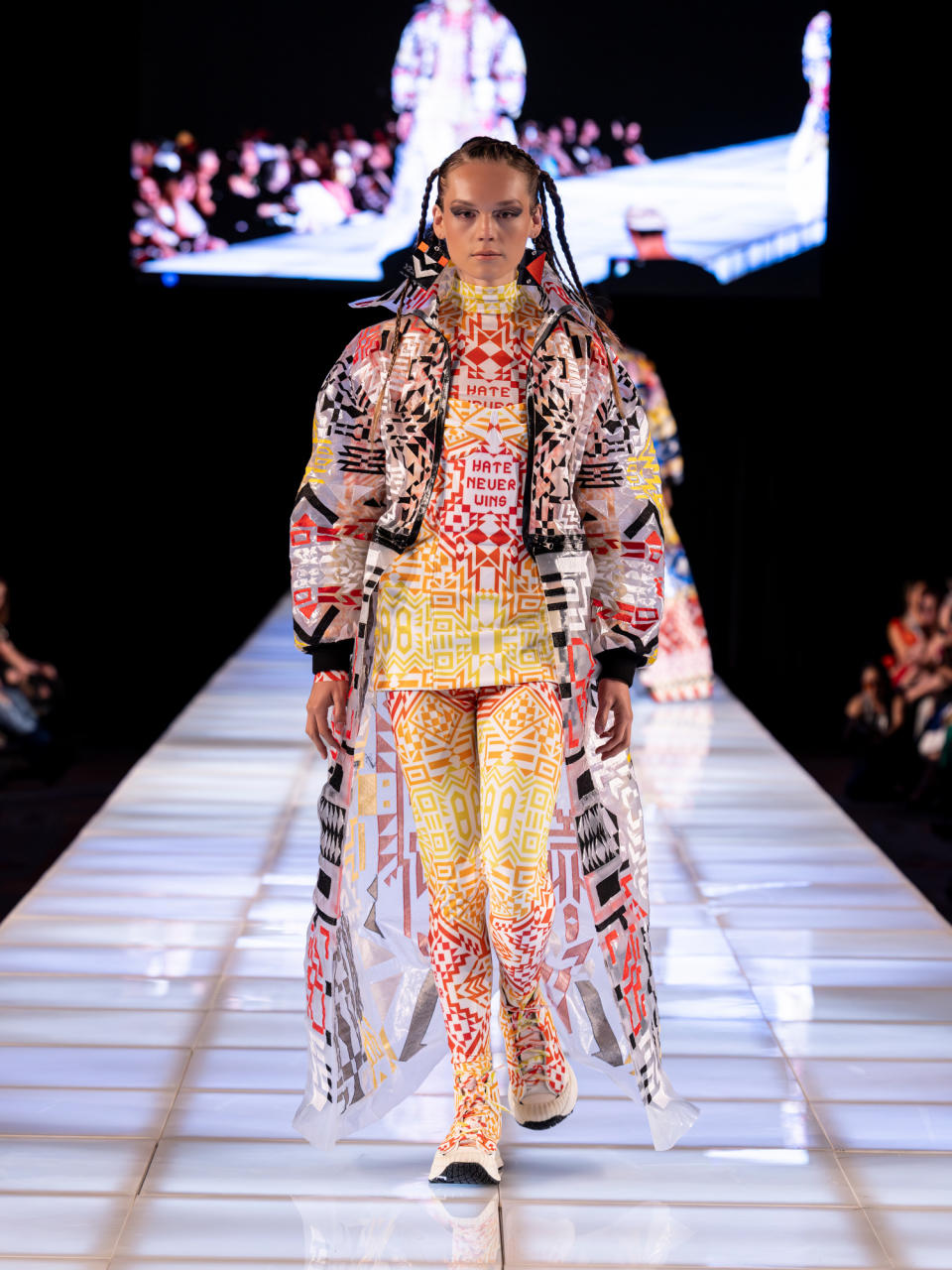
There was also a pop-up shop in the lobby, where on Sunday afternoon Tierra Alysia was moved to tears.
The Kashia Pomo designer, who attended Central Saint Martins in London, had just sold four hand-beaded silk cashmere full-length coats from her Vividus Runway collection. “I made over $50,000,” she said of the exquisite one-of-one pieces referencing traditional natural elements and symbols from various tribes. She showed on the runway at Indigenous Fashion Week in May, but this was her first Indian Market, and a successful one at that.
“I’m used to being the only Native girl in school, and you feel weird sometimes. But here, we’re like the ‘It’ girls, and it’s really cool,” she said. “We are the moment, people are paying attention and giving us value for the first time.”
Launch Gallery: 2024 SWAIA Native Fashion Show in Santa Fe, New Mexico
Best of WWD
Solve the daily Crossword

